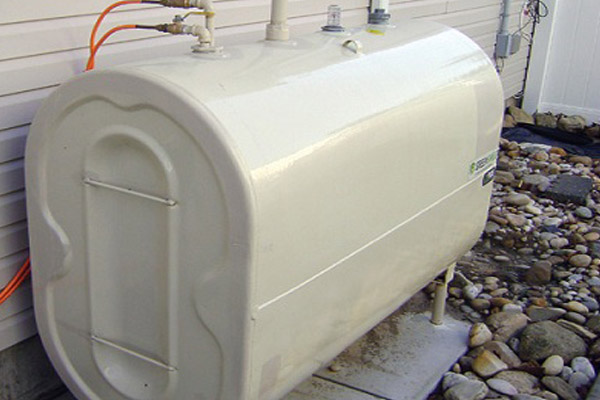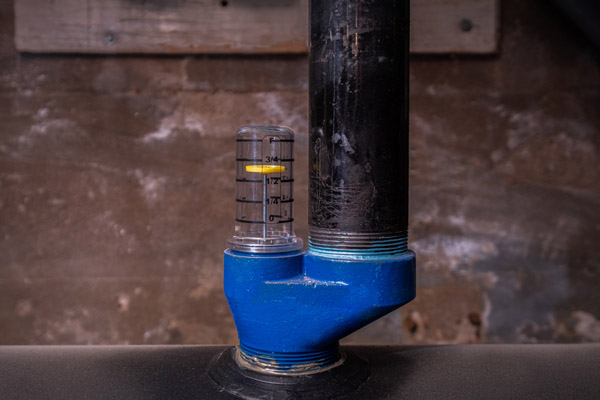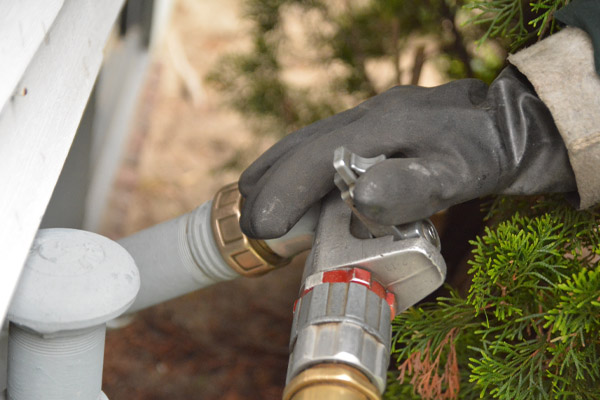
Houses equipped with oil heating systems are prepared for the cold winter months. Given that the fuel is stored onsite, these homes are not reliant on an external, uninterrupted fuel supply. This makes them less susceptible to interruptions in supply compared to houses that use natural gas. Nonetheless, homeowners must ensure that their storage tank has the capacity to fulfill their heating needs. In addition, they should develop a routine of frequently monitoring their oil tank’s fuel level using the heating oil tank gauge. This will facilitate the scheduling of heating oil deliveries in a punctual manner.
Understanding Oil Tank Float Gauges
Contents
The design of oil tanks has remained relatively unchanged over the past century. It is straightforward and effective. The main component is usually a steel container with rounded edges that are welded together. There’s a fill pipe for adding oil and a vent pipe for letting out surplus air. Below the vent pipe, there’s a whistle or vent alarm that makes noise as air is released. Oil feed lines transfer oil from the tank to the burner. Finally, there’s the float gauge which has a hinged arm beneath it that floats on the oil’s surface. As oil gets depleted, the arm lowers and moves the gauge indicator disc.
Related Article: Home Heating Oil: Top Tips For Summer
Locating the Oil Tank on Your Property

If you’ve recently purchased the home, you need to locate the oil tank on your property to read the gauge. Sometimes this is straightforward as the tank is above ground. However, it could be tucked away in a basement or there could be an underground oil tank. The external pipes and float gauge should be accessible. Tanks are typically large, usually capable of holding 275 gallons or more of heating oil. For safety reasons, these tanks are not filled to capacity, often containing around 225 to 250 gallons of oil. The remainder of the tank is air-filled, allowing for oil expansion without issues.
Related Article: What Size Oil Tank Do I Need For My Home?
How to Read the Oil Tank Float Gauge
Once you’ve found the oil tank, pay attention to the gauge at the top. You should see a transparent cylindrical device with an indicator disc. Standard markings include F for Full, 3/4, 1/2, 1/4, and E for Empty. Check where the disc is to know your oil tank levels. First-timers may find reading the gauge confusing, uncertain whether to follow the disc’s top or bottom. But it doesn’t make a difference as the gauge isn’t highly accurate. The key is to check where the disc’s middle aligns with the markings.
Related Article: Oil Tank Condensation: What You Need To Know
Estimating the Remaining Fuel in Your Heating Oil Tank

After approximating the fuel level inside the tank, the following step is to calculate the remaining gallons. This calculation is done manually using a simple formula. First, determine the tank’s size to establish its fuel capacity. For instance, many homes have a 275-gallon tank. However, since this tank isn’t filled to capacity, it usually contains only 240 gallons of heating oil, with the rest being air. Hence, a float gauge pointing to 1/4 indicates that only 60 gallons remain (240 multiplied by 0.25). While this could last a few weeks, it’s prudent to order a refill immediately rather than wait for the tank to run out. A good guideline is to arrange for a heating oil delivery when your tank is approximately 30% full.
Testing for Oil Tank Gauge Failure
The float gauge can only give a rough estimate of the present fuel level. At times, it may not provide an accurate approximation due to a malfunction in the float mechanism. One way to verify this is to remove the outer casing and push the float downward. Upon releasing it, the float should rise on its own. If it doesn’t, you’re dealing with a faulty float that needs professional attention. This can occur due to wear and tear in older tanks. The arm underneath may also rotate and get stuck against the tank’s side. Lastly, floats can become coated in thick sludge that weighs them down, preventing them from functioning correctly.
Related Article: Wi-Fi Thermostats for Oil Heat
Coping with a Broken Oil Tank Gauge
If your tank’s gauge is broken, you can use alternative methods to measure the fuel level. This also applies to tanks that never had a float gauge. Manual measurement involves a long, thin stick that can fit into the hole. The stick’s length should match the tank’s height. After a refill, dip the stick to see where the fuel top is when the tank is full. Mark this point. Later, use the same stick to determine how much the fuel level has decreased.
Related Article: What Do Heating Oil Additives Do?
Expected Duration of a Full Heating Oil Tank

A full heating oil tank usually lasts a significant period. The exact duration is determined by:
- Tank size
- Internal temperature settings
- Size of the home
- Regional climate
- Insulation level
- Frequency of use
- Efficiency of the heating system
- Other variables
Most homes only use heating oil for specific areas. Some heat the entire house. By tracking their fuel usage each year, homeowners can get a good estimate of their annual heating oil needs.
Related Article: New Efficient Oil Heating Systems Increase Comfort & Decrease Fuel Use
Conclusion
Winters in New Jersey can be severe. Ensure your home never runs out of heating oil during the year’s colder months. Regularly monitor the float gauge to determine the remaining fuel in the tank, and arrange for a refill promptly if it drops below 1/3 of the tank’s capacity. This ensures continuous heating, leading to a warm and cozy home.
Call PFO Heating & Air Conditioning For Reliable Heating Oil Deliveries

When you’re searching for a reputable heating oil delivery company, you can contact PFO Heating & Air Conditioning.
We offer the best home heating oil delivery and the most reasonable heating oil prices in the area. We have different delivery plans and financing options so you can customize your oil deliveries to meet your needs. Also, our team of expert technicians provides HVAC services to help improve the performance and efficiency of your HVAC equipment. Our priority is your satisfaction, so we back all of our work with a guarantee. Give us a call today!
Call PFO Heating & Air Conditioning today and learn more about the services we offer. We will be happy to answer all your questions and concerns. Call now!
Click here to contact us now or call us at (800) 253-9001 to find out more! Click the link to view our service area.



